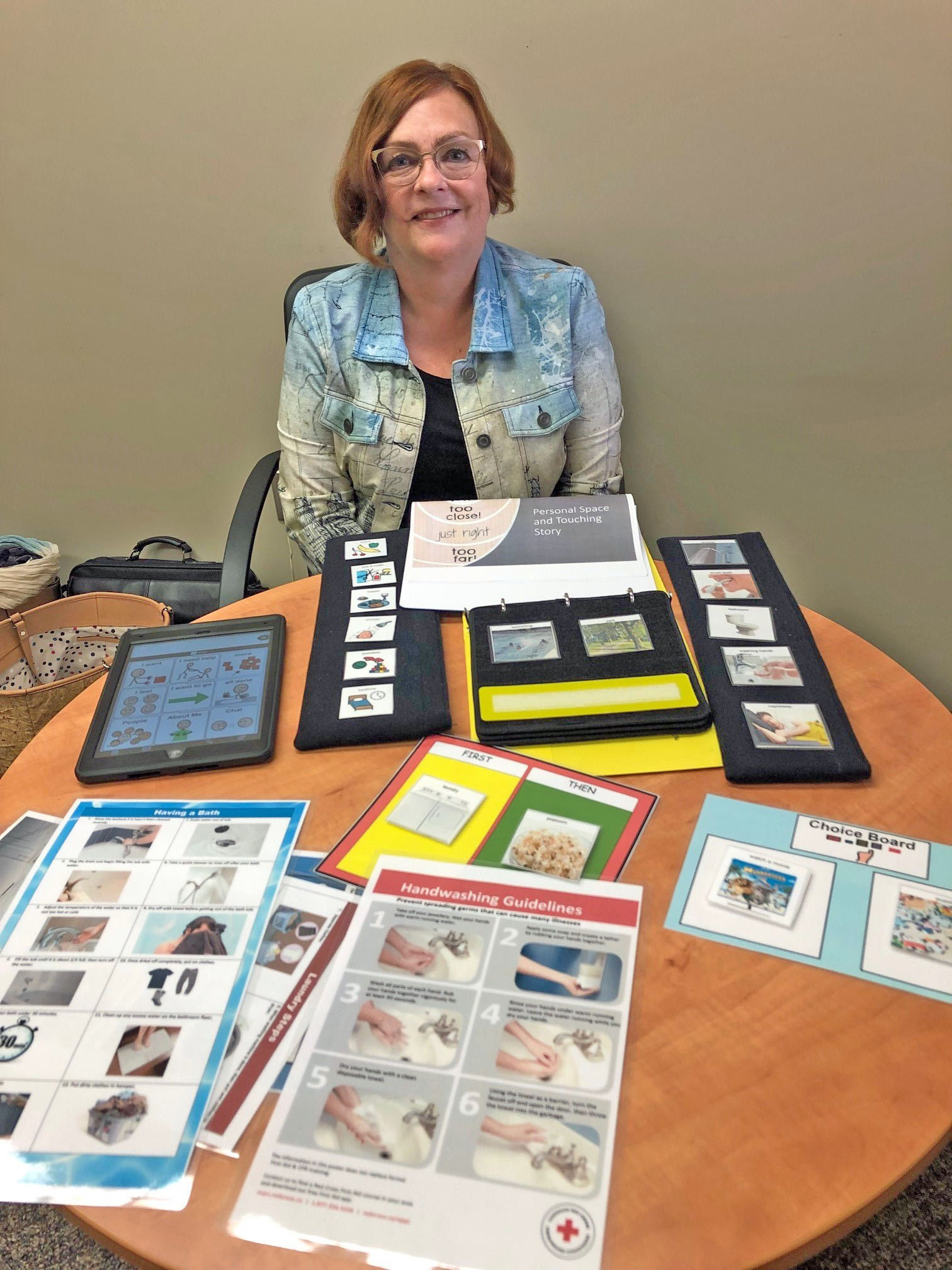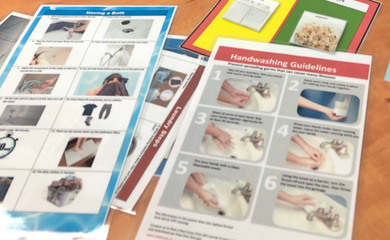Communication. Being able to express our wants, our needs, and our opinions. Think for a moment how frustrating it is when we’re in an area where people speak a language that we don’t. Suddenly, we can’t tell others what we need. We lack the language to say something as simple as, “I’m hungry – where can I get food?” or “Where is the washroom?”

participants communicate
For some of the participants in our Programs for Persons with Developmental Disabilities (PDD), this inability to communicate used to be their daily reality. Behavioural issues are sometimes simply a result of an inability to express their needs.
I sat down with Ranch Ehrlo’s speech and language pathologist, Terrea Woodward-Friesen, to learn how the PDD team uses different tools to overcome this barrier and allow our participants, all of whom are at different developmental levels, to express themselves.
The tools
The tools are numerous; from first/then boards and visual schedules, to social stories, to iPads with several programs specifically for communication - the tool depends on the participant. All the tools are portable so that our participants can communicate in every space: from home to work to outings in the community and back again.
Visual representations of activities, foods, and feelings, offer participants a different way to communicate – they can go through their photos and point or give their caregiver the photo corresponding to what they’re trying to communicate. For example, a picture of an apple might indicate that the participant is hungry, or it may specifically mean they want an apple. Once participants can discriminate between photos and make consistent choices, the next step is sentence strips where they can say exactly what they want, like “I want (photo of an apple)” or “I have (a photo of a bike)”. The further the participant is in their development, the more complex the sentences can be.

of connectability.ca
First/then boards and visual schedules are useful for participants who have trouble with transitions but also ease anxiety about daily life. Knowing what’s coming is comforting for all of us, and our participants are no exception. These tools use photos to layout a morning or evening at home. Sometimes, the schedules are further personalized with photos of the participants themselves – seeing themselves doing the tasks laid out makes the connection clear.
Social stories are another way that the PDD team helps our participants learn at their level of understanding. They are simple descriptions of a situation, such as personal space, what is an acceptable form of greeting, how can we say goodbye, or what we can do when we feel angry instead of lashing out.
Terrea told me that one of her favourite tools is the iPad. Technology sometimes motivates participants more than the simpler visual tools, and the programs can be customized for a wide range of developmental levels. Terrea has seen amazing success with these programs – participants have gone from not being able to express themselves at all to having full conversations.
Alternative communication methods allow our participants to experience independence regardless of their inability to verbally communicate.


